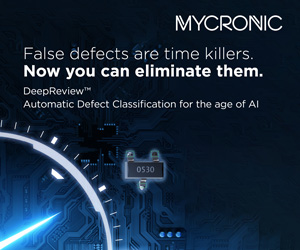Revenue per Wafer Rising As Demand Grows for sub-7nm IC Processes
Despite high development costs, using smaller nodes yields larger revenue per wafer.
The success and proliferation of integrated circuits has largely hinged on the ability of IC manufacturers to continue offering more performance and functionality for the money. Driving down the cost of ICs (on a per-function or per-performance basis) is inescapably tied to a growing arsenal of technologies and wafer-fab manufacturing disciplines as mainstream CMOS processes reach their theoretical, practical, and economic limits.
Based on data presented in IC Insights’ new edition of The McClean Report (released in January 2020), many IC companies are now designing high-performance microprocessors, application processors, and other advanced logic devices based on 10nm and 7nm process technology. Some of the current iterations from logic and foundry suppliers are shown in Figure 1.
Figure 1
With more variety than ever among the processes that companies offer, it is challenging to compare them in a fair and useful way. Moreover, “plus” or derivative versions of each process generation and half steps between major nodes have become regular occurrences.
In the foundry world, manufacturing with leading-edge processes carries a distinct advantage. In 2019, TSMC was the only pure-play foundry manufacturing ICs using 7nm process technology. Not coincidentally, its overall revenue per wafer increased significantly as leading fabless IC suppliers lined up to have their newest designs manufactured on the 7nm process. TSMC was the only pure-play foundry that enjoyed higher revenue-per-wafer in 2019 (13%) compared to 2014. In contrast, 2019 revenue per wafer figures at GlobalFoundries, UMC, and SMIC—whose smallest process node is 12/14nm—were down by 2%, 14%, and 19% respectively, compared with 2014 (Figure 2).
Figure 2
Besides foundry and logic IC manufacturing, memory suppliers like Samsung, Micron, SK Hynix, and Kioxia/WD are using advanced processes to make their DRAM and flash memory components. No matter the device type, the IC industry has evolved to the point where only a very small group of companies can develop leading-edge process technologies and fabricate leading edge ICs. Growing design and manufacturing challenges and costs have divided the integrated circuit world into the haves and have-nots. Marketshare makeup in various IC product segments has become “top heavy,” with increasing shares held by the top producers, leaving very little room for remaining competitors.












